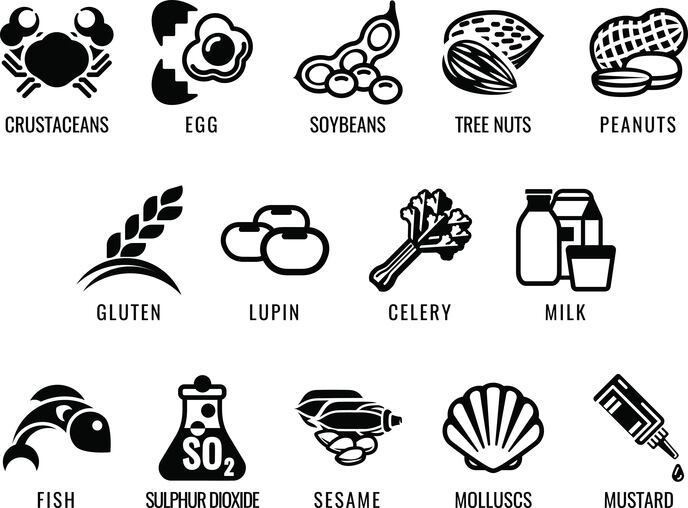Testing foods for which consumers reported experiencing an allergic reaction, the scientists found 37% of the 51 products analysed had between one and four 'culprit allergens' that, according to the ingredient declaration, were not present.
All of the allergens detected are regulated in the EU and should have been declared.
They also found anomalies in how manufacturers are using the precautionary allergen label (PAL). For instance, none of the six products that contained peanut allergens or the two products with egg had a PAL statement but the products that did warn consumers about the possible presence of peanut, egg and soy contained no allergens.
Under the EU’s Food Information for Consumers regulation, food manufacturers must label 14 allergens – peanuts, tree nuts, soybeans, mustard, eggs, lupin, milk, fish, cereals containing gluten, sesame, celery, sulphur dioxide, molluscs and crustaceans.
“Both [individuals'] neglect of PAL statements and omission of using a PAL statement by food manufacturers are contributing to accidental reactions,” the scientists conclude.
“Overall, the study shows that [currently] choosing a safe food product is problematic for allergic patients, especially for the majority that have multiple allergies.”
‘Serious health concern’

Peanut, milk and sesame showed the highest levels of allergen while milk was the most frequently detected allergen. Levels ranged from one part per million (ppm mg/kg) of allergenic protein in the consumed food (ppm) to 5000 ppm.
“The concentrations detected in this study posed a serious health concern for the milk allergic population as four out of eight products estimated a high (10-25%) to extremely high (above 40 %) risk for objective allergic reactions.
“These results are important as milk is one of the allergenic foods with widespread use in production of foods and the prevalence of milk allergy is considerable, particularly in childhood.”
Bread and bread rolls, cookies and cakes, chocolates and bonbons and meat products were reported “relatively often and in equal fashion”, they write, accounting for 62 out of 151 products.
However, the researchers warn these products are not necessarily more dangerous than others as the higher rate of allergic reactions may come from the fact they are eaten more frequently. According to the Dutch food consumption survey, for instance, biscuits, bread and sweets are eaten on 40 to 93% of the reported days compared to 11 to 25% for soups, crisps and snacks.
‘Businesses need guidance'
Food law expert Luca Bucchini, who participated in the University of Manchester’s Integrated approaches to food allergen and allergy management (iFAAM) project, said while more data is needed to assess the situation in other member states, it would be reasonable to expect a similar situation across the EU.
“Despite the efforts of industry, the food allergen problem has not been solved. Recall data, in fact, point to the same fact, but there is a perception that food allergens are no longer an issue. This is not the case.”
Bucchini would like to see the EU put into place “proportionate rules for precautionary labelling”.
“Businesses also need guidance, especially smaller businesses,” he added.
This study is not the first to flag the problem of undeclared allergens in food.
In 2015, Nordic authorities in Sweden, Norway, Finland and Denmark began cracking down on the unnecessary use of allergen advisory warnings after a review found one fifth of products were wrongly labelled.
In 2014, the UK’s Food Standard Agency (FSA) surveyed more than 1000 products and found that around half of the foods which claimed ‘May contain…’ or ‘Not suitable for people with a X allergy’ were free of the allergen in question.
Source: Journal of Allergy and Clinical Immunology
“Accidental food allergy reactions: products and undeclared ingredients”
Available online 14 June 2018, DOI: https://doi.org/10.1016/j.jaci.2018.04.041
Authors: W. Marty Blom, Anouska D. Michelsen-Huisman, Harmieke van Os-Medendorp et al.
